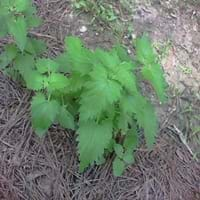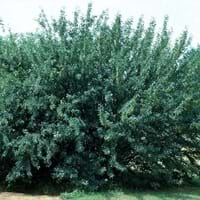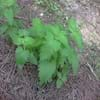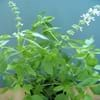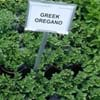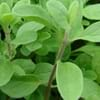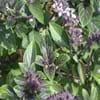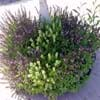What is
Life Span
Perennial
Perennial
Type
Herbs
Shrub
Origin
Europe, Asia
Russia/Siberia, China
Types
Not Available
Dwarf Siberian Peashrub, Sutherland Peashrub, Weeping Siberian Peashrub
Habitat
Dry areas, Roadsides, stream banks, Stream side, Waste areas
Forest edges, gully slopes, Open Forest, Riverbanks, Sandy areas
USDA Hardiness Zone
3-7
2-8
AHS Heat Zone
7-1
8-1
Sunset Zone
1a, 1b, 2a, 2b, 3a, 3b, 4, 5, 6, 7, 8, 9, 10, 11, 12, 13, 14, 15, 16, 17, 18, 19, 20, 21, 22, 23, 24
A1, A2, A3, 1a, 1b, 2a, 2b, 3a, 3b, 4, 5, 6, 7, 8, 9, 10, 12
Habit
Clump-Forming
Narrow Upright/Fastigiate
Information
Plant Size
Minimum Height
980.00 cm
99+
460.00 cm
99+
Minimum Width
60.00 cm
99+
300.00 cm
99+
Plant Color
Flower Color
White, Lavender
Yellow
Flower Color Modifier
Bicolor
Not Available
Fruit Color
Sandy Brown
Brown
Leaf Color in Spring
Gray Green, Gray
Light Green
Leaf Color in Summer
Gray Green, Gray
Light Green
Leaf Color in Fall
Gray Green, Gray
Light Green, Light Yellow
Leaf Color in Winter
Light Green
Not Available
Shape
Leaf Shape
Arrowhead
Pinnate
Thorns
No
Yes
Season
Plant Season
Spring, Summer, Fall
Spring
Growing Conditions
Sunlight
Full Sun, Partial Sun
Full Sun
Growth Rate
Fast
Fast
Type of Soil
Clay, Loam, Sand
Clay, Loam
The pH of Soil
Acidic, Neutral, Alkaline
Acidic, Neutral, Alkaline
Soil Drainage
Well drained
Well drained
Bloom Time
Summer, Late Summer, Early Fall
Spring
Repeat Bloomer
Yes
No
Tolerances
Drought, Dry soil
Drought, Salt
Care
Where to Plant?
Container, Ground
Ground
How to Plant?
Seedlings
Cuttings, Layering, Seedlings
Plant Maintenance
Low
Low
Watering Plants
Watering Requirements
Do Not over Water, Never Over-water, Requires regular watering, Water when soil is dry
Keep the ground moist but not water-logged, occasional watering once established
In Summer
Lots of watering
Moderate
In Spring
Moderate
Ample Water
In Winter
Average Water
Average Water
Soil
Soil pH
Acidic, Neutral, Alkaline
Acidic, Neutral, Alkaline
Soil Type
Clay, Loam, Sand
Clay, Loam
Soil Drainage Capacity
Well drained
Well drained
Sun Exposure
Full Sun, Partial Sun
Full Sun
Pruning
Prune if you want to improve plant shape, Prune in spring, Remove damaged leaves, Remove dead leaves
Remove dead branches, Remove dead or diseased plant parts
Fertilizers
fertilize every 2-3 weeks while growing, fertilize in growing season
fertilize in spring
Pests and Diseases
Caterpillars, Leaf Hoppers, Nematodes, Spider mites
blister beetles, Septoria leaf spot, stem decay
Plant Tolerance
Drought, Frost
Drought, Salt
Facts
Flowers
Showy
Yes
Flower Petal Number
Single
Single
Fruits
Showy Fruit
No
No
Edible Fruit
No
No
Fragrance
Fragrant Flower
Yes
No
Fragrant Fruit
Yes
No
Fragrant Leaf
Yes
No
Fragrant Bark/Stem
Yes
No
Showy Foliage
Yes
No
Showy Bark
No
No
Foliage Texture
Medium
Fine
Foliage Sheen
Matte
Matte
Evergreen
No
No
Invasive
Yes
Sometimes
Self-Sowing
Yes
Yes
Attracts
Flying insects, Insects, Spider Mites
Bees, Hummingbirds
Allergy
Avoid during Pregnancy, Headache, Stomach pain, Vomiting
Diarrhea, Vomiting
Benefits
Uses
Aesthetic Uses
Beautification, Landscape Designing, Showy Purposes
Not Available
Beauty Benefits
Not Available
used as a dye
Edible Uses
Yes
Yes
Environmental Uses
Air purification
Erosion control, Fixes Nitrogen, Food for animals, Shelter for wildlife, Windbreak
Plant Benefits
Medicinal Uses
Arthritis, Cold, constipation, Fever, Insomia, Migraines, Upset stomach
Cancer, Dysmenorrhea, Gynaecological
Part of Plant Used
Whole plant
Leaves, Seeds
Other Uses
Air freshner, Decoration Purposes, Employed in herbal medicine, Making Perfumes, Making Shampoo, Making Sweet Scented Oil, Medicinal oil, Used as Ornamental plant, Used for its medicinal properties
Fibre, For making oil, Shelterbelt, Used as a dye, Used for making informal hedge
Used As Indoor Plant
Yes
No
Used As Outdoor Plant
Yes
Yes
Garden Design
Container, Herb / Vegetable, Mixed Border
Hedges, Mixed Border, Screening, Wind Break
Scientific Name
Botanical Name
NEPETA cataria
CARAGANA arborescens
Common Name
Cat Nip, Catnip
Siberian peashrub, Siberian pea-tree, caragana
In Hindi
कटनीप
Siberian peashrub
In German
Katzenminze
Gemeiner Erbsenstrauch
In French
cataire
Caraganier de Sibérie
In Spanish
Catnip
Siberian Peashrub
In Greek
Είδος δυόσμου
Siberian Peashrub
In Portuguese
catnip
Siberian peashrub
In Polish
Kocimiętka
Karagana syberyjska
In Latin
catnip
Siberian Peashrub
Classification
Kingdom
Plantae
Plantae
Phylum
Magnoliophyta
Magnoliophyta
Class
Magnoliopsida
Magnoliopsida
Order
Lamiales
Fabales
Family
Lamiaceae
Fabaceae
Genus
Nepeta
Caragana
Clade
Angiosperms, Asterids, Eudicots
Angiosperms, Eudicots, Rosids
Tribe
Mentheae
Not Available
Subfamily
Nepetoideae
Not Available
Number of Species
250
99+
Not Available
|
||
|
||
|
